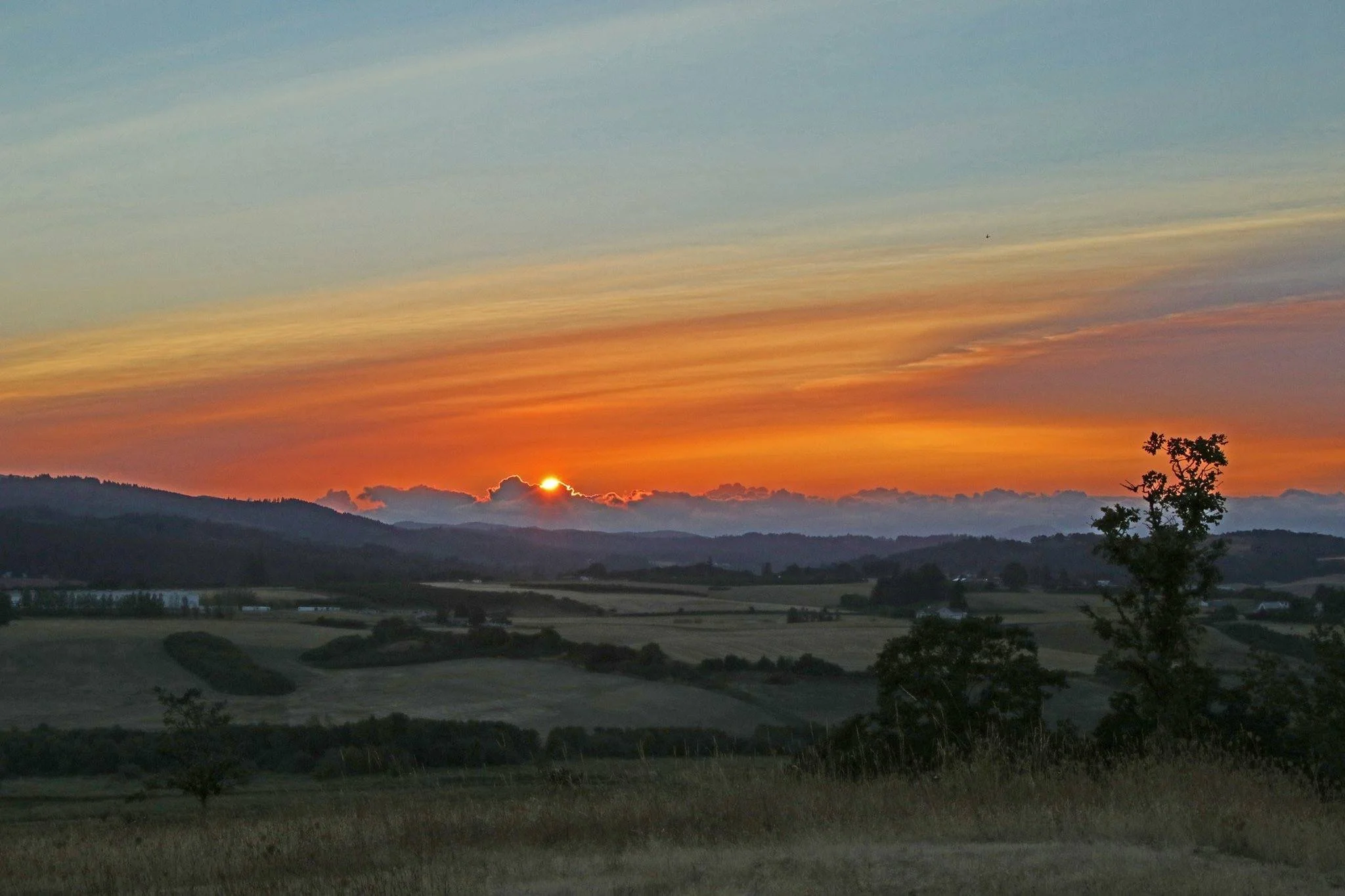📷 A beautiful sunset at Baskett Slough National Wildlife Refuge, OR | Richard Horner / USFWS
The National Wildlife Refuge Association is excited to highlight the newest addition to the National Wildlife Refuge System: the Willamette Valley Conservation Area in Oregon. As the 572nd unit of the Refuge System, this pristine conservation area represents a vital step forward in the ongoing mission to protect and conserve the rich biodiversity of our nation's natural landscapes.
You might wonder why this new addition is called a "Conservation Area" rather than a "National Wildlife Refuge." The National Wildlife Refuge System includes a variety of designations, each reflecting specific conservation goals and management strategies. To learn more about the different names and their meanings, click here to read our guide on this topic.
A Haven for Wildlife and Habitats
The endangered Fender's Blue Butterfly in Willamette Valley, OR | USFWS
The Willamette Valley Conservation Area, located in Oregon's lush Willamette Valley, is a vital addition to the Willamette Valley National Wildlife Refuge Complex. This complex, which also includes the William L. Finley, Ankeny, and Baskett Slough National Wildlife Refuges, is managed primarily to maintain critical habitats, especially for the Dusky Canada Goose during the winter months.
The conservation area itself is a mosaic of diverse ecosystems—wetlands, grasslands, and riparian corridors—that provide essential resources for migratory birds along the Pacific Flyway, including species such as the Northern Pintail and Western Sandpiper.
Beyond supporting migratory birds, the Willamette Valley Conservation Area focuses on protecting up to 22,650 acres of grasslands, both prairies and oak savanna, and oak woodlands through a combination of fee-title acquisitions and conservation easements. This initiative is crucial for the recovery of species listed under the federal Endangered Species Act (ESA), such as the Oregon Chub, Fender’s Blue Butterfly, and Kincaid’s Lupine. The conservation efforts also support a variety of pollinators, including native bees and butterflies, which are essential for maintaining a healthy and resilient ecosystem.
A Model of Conservation and Community
Planting Milkweed at Baskett Slough National Wildlife Refuge, OR | USFWS
The establishment of the Willamette Valley Conservation Area is a true testament to the power of collaboration. This effort brought together a diverse group of stakeholders—federal and state agencies, local communities, conservation organizations, private landowners, and tribal nations—working toward a shared goal of protecting and conserving this vital landscape.
A key partner in these efforts is the Willamette Valley Oak and Prairie Cooperative, whose mission is to protect, restore, and maintain a resilient network of oak and prairie habitats. Their guidance has been instrumental in shaping the conservation strategies for the area. Tribal nations, including the Confederated Tribes of the Grand Ronde, the Confederated Tribes of Siletz Indians, and the Confederated Tribes of Warm Springs, also played an essential role. They contributed traditional ecological knowledge, helping to shape conservation practices that honor both the ecological and cultural significance of the land.
The U.S. Fish and Wildlife Service engaged with the public throughout the planning process, including public meetings and comment periods, which saw strong support for establishing the conservation area. This collaborative approach reflects a community-driven commitment to conserving the region's natural beauty and biodiversity.
Conservation and Future Plans
While the Willamette Valley Conservation Area is a significant new addition to the Refuge System, it is currently in the early stages of development. The first land acquisition within the conservation area, the 600-acre Diamond Hill wetlands, marks the beginning of a broader effort to protect and manage this landscape over the next decade. At this time, the area is not yet open to public visitation as plans and infrastructure for public access are still being developed.
Native wildflowers in full bloom indicative of a Willamette Valley wet prairie at Ankeny National Wildlife Refuge, OR | Larry Clack
Future management efforts will likely focus on habitat restoration and the potential development of infrastructure to support wildlife-dependent recreational activities, allowing for both wildlife conservation and public enjoyment. Public access will be guided by ongoing habitat management and land acquisition efforts, ensuring that both wildlife and people benefit from this important conservation initiative. We encourage you to stay tuned for updates on when the Willamette Valley Conservation Area will be ready to welcome visitors for educational and recreational opportunities.
Looking Ahead
The Willamette Valley Conservation Area is a testament to what can be achieved when we come together with a shared vision for conservation. As we celebrate the designation of this 572nd unit of the National Wildlife Refuge System, we are reminded of the importance of conserving our natural world and the incredible diversity of life that calls these places home.
The National Wildlife Refuge Association is excited to support the awareness and appreciation of the Willamette Valley Conservation Area as part of our broader mission to protect, promote, and enhance America's national wildlife refuges. We encourage you to stay informed about developments in this new conservation area and to engage with opportunities that connect you with the natural world.


